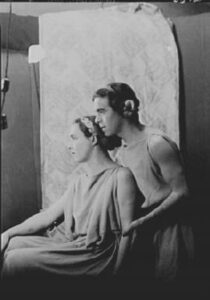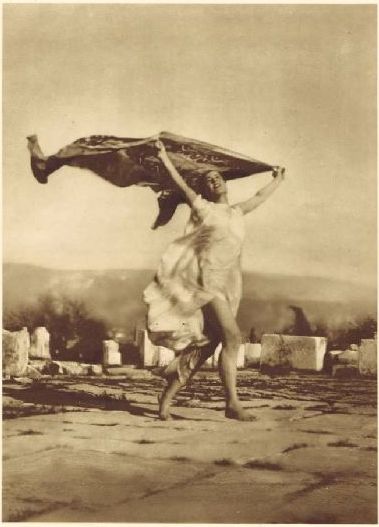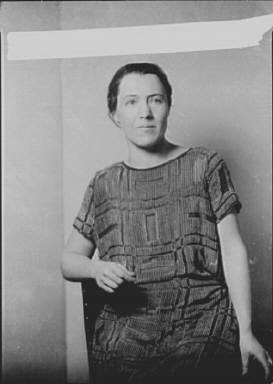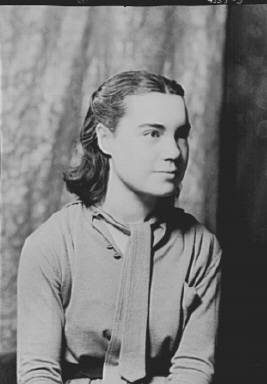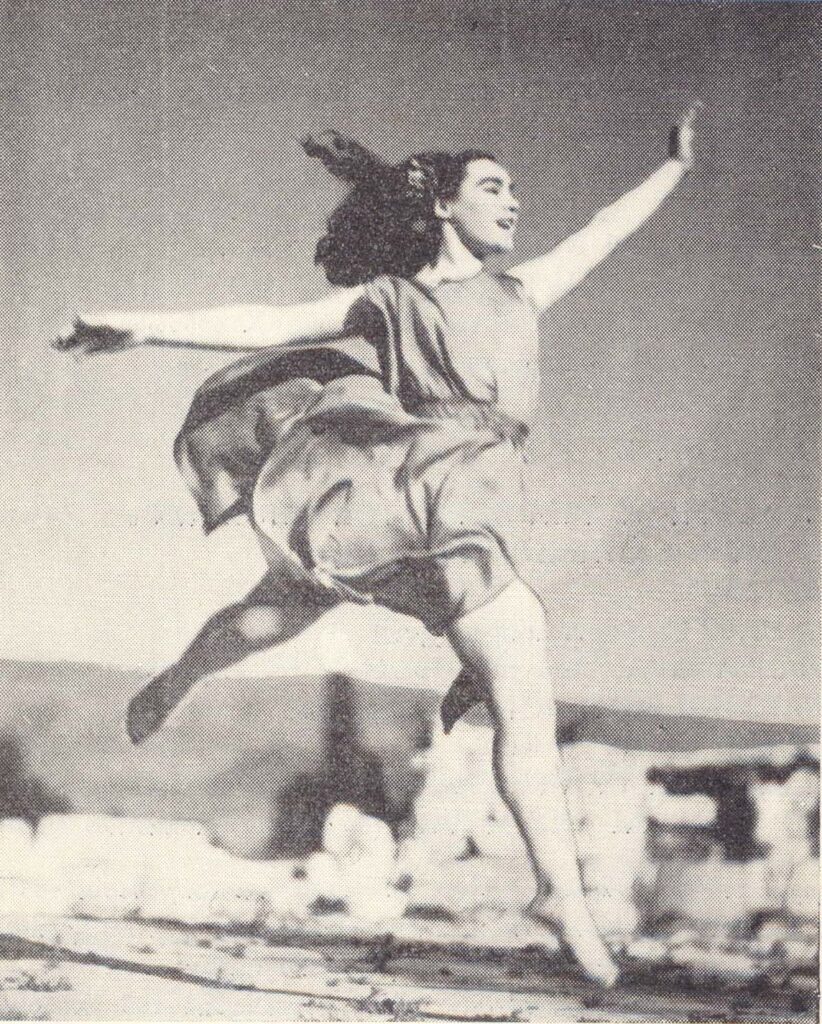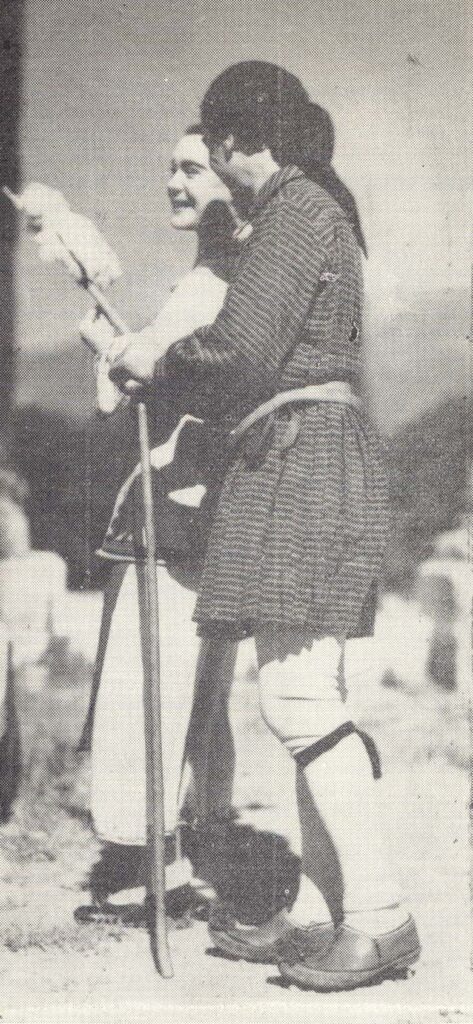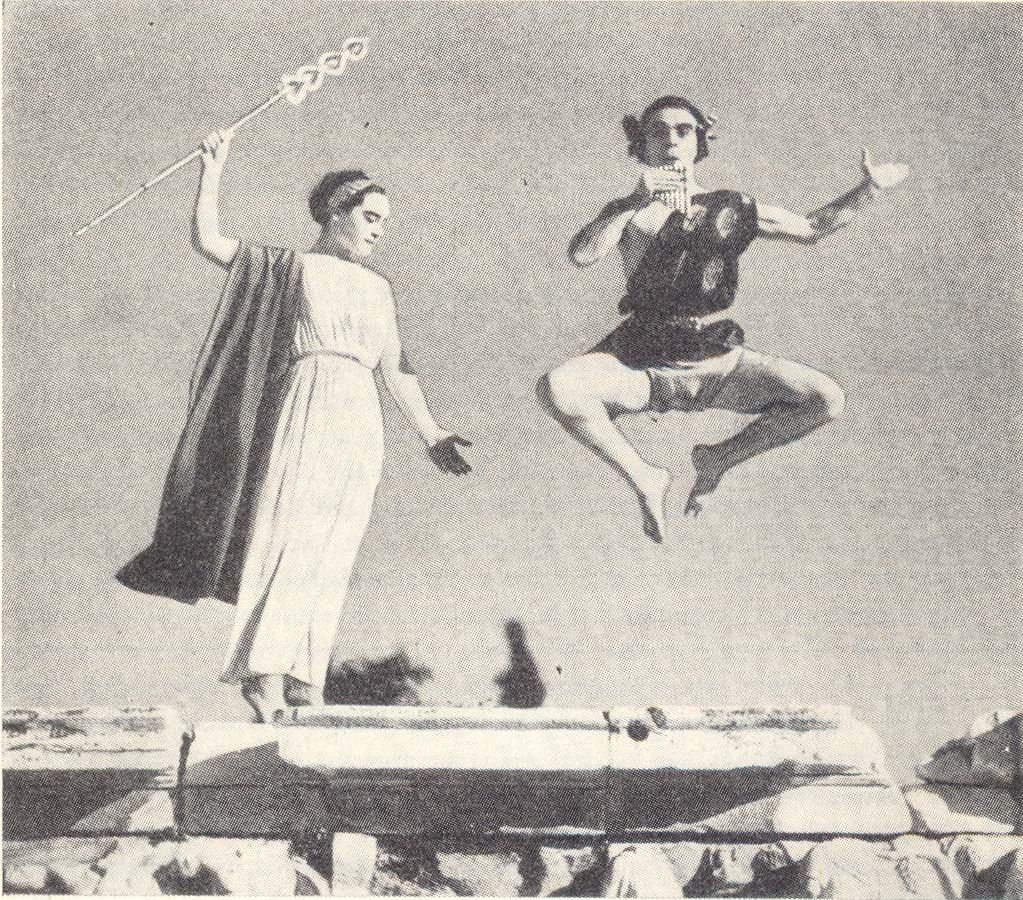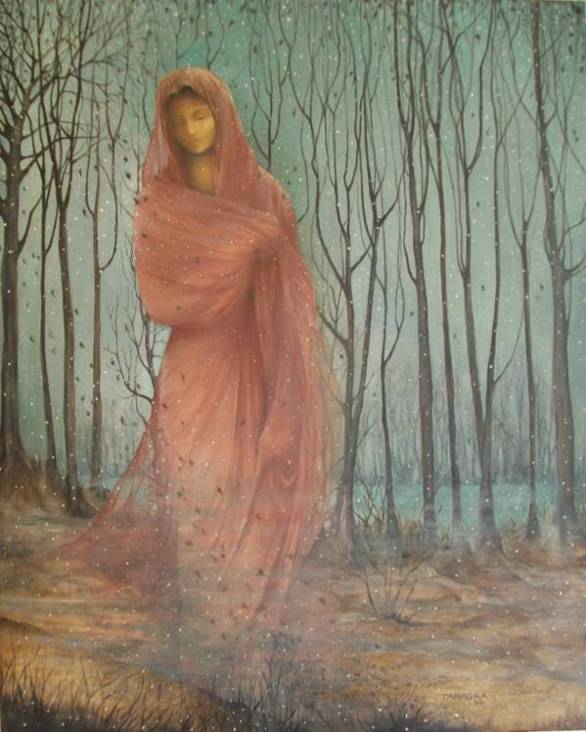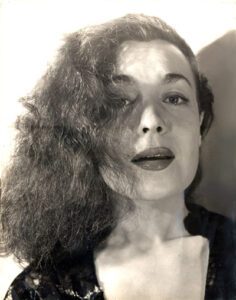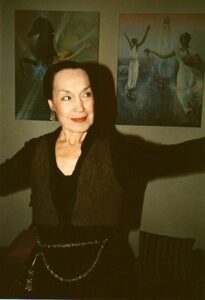Fellow Dancers
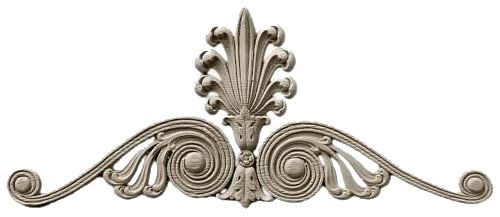
Tanagra Kanellos
Τανάγρα Κανέλλου (Charlotte Markham, 1892-1937)
Στις Ηνωμένες Πολιτείες ο Βάσος Κανέλλος γνώρισε την περίοδο 1919-1920 τη χορεύτρια και χορογράφο Charlotte Markham (1892-1937), μετέπειτα σύζυγό του και καλλιτεχνικό ταίρι του, με το όνομα Τανάγρα Κανέλλου. Μέχρι το 1926 το ζεύγος Κανέλλου έδωσε παραστάσεις χορού και χοροδράματος –βασισμένες στην ελληνική παράδοση, την ελληνική μυθολογία και το αρχαίο δράμα– στο Μπρούκλιν, το Ιλλινόις, το Σαν Φρανσίσκο, το Σικάγο και αλλού. Μετά από πρόσκληση του Άγγελου Σικελιανού ήλθαν στην Ελλάδα και το 1927 έλαβαν μέρος στις πρώτες Δελφικές Εορτές. Τα επόμενα δέκα χρόνια εμφανίστηκαν στο αρχαίο θέατρο Διονύσου, στο Καλλιμάρμαρο στάδιο, στο Ωδείο Ηρώδου του Αττικού, στο Σούνιο και σε αρχαία θέατρα ανά την Ελλάδα. Μετά το θάνατο της Τανάγρας, το 1937, τη θέση της παρτενέρ του Βάσου Κανέλλου πήρε η κόρη τους Ξένια (1921-1999)
[Πηγή: 1. «Βάσος Κανέλλος», στο: Ελένη Φεσσά-Εμμανουήλ (επιμ.), Χορός και θέατρο. Από την Ντάνκαν στις νέες χορευτικές ομάδες. Αθήνα, Εθνικό και Καποδιστριακό Πανεπιστήμιο Αθηνών, Τμήμα Θεατρικών Σπουδών / Έφεσος, 2004, σσ. 218-221]. 2. Υλικό του αρχείου Βάσου και Τανάγρας Κανέλλου (1918-1978) από το ΕΛΙΑ].
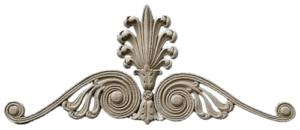
When Vassos Kanellos was in the U.S.A., he met the dancer and choreographer Charlotte Markham, later wife and artistic mate (1892-1937), named Tanagra Kanellos. By 1926 the couple Kanellou gave performances of dance and ballet-based on Greek tradition, Greek mythology and ancient drama in Brooklyn, Illinois, San Francisco, Chicago and elsewhere. At the invitation of Angelos Sikelianos came to Greece and in 1927 took part in the first Delphic Festival. The next ten years gave performances in the ancient theater of Dionysus at the Panathenaic stadium, the Odeon of Herodes Atticus, at Sounion and ancient theaters across Greece. After the death of Tanagra, in 1937, the position of partner of Vassos Kanellos took their daughter Xenia (1921-1999).
[Resources Resumes: 1. “Vassos Kanellos’, in: Helen Fessa Emmanuel (ed.), dance and theater. From Duncan’s new dance groups. Athens, University of Athens, Department of Theatre Studies / Ephesus, 2004, pp. 218-221]. 2. Material of Hellenic Literary and Historical Archives].

Tanagra Kanellos dancing Victory of Spring in the Theater of Dionysos in Athens, Illustration (1929?). Photo by Jean Martin
Tanagra Kanellos dancing on the Acropolis, 1932
Tanagra Kanellos

Xenea Tanagra Kanellos - Sander
Xenea Tanagra Kanellos-Sander (1921-1999), daughter of Vassos and Tanagra Kanellos
Xenea new Tanagra, Ancient Theater of Dionysos, Athens, Greece, 1939
Vassos Kanellos with Xenea at ” The handkerchief of Maro’s site”, 1939, Athens, Greece.a
Vassos Kanellos with Xenea, 1939, Ancient Theater of Dionysos, Athens, Greece
Painting by Xenia Tanagra Kanellos
Returned to Greece in 1977. She left New York to return to her native soil and continue the revival of ancient Greek chorodrama which her parents had begun at the first Delphic Festivals of 1930, organized by Angelos Sikelianos. She said “Dance belongs to Greece. Dance is not random and meaningless movement, but motion which commands the spirit. The body and the spirit are not enemies, but comprise a balanced whole”.
This is why she called her work “Greek Yoga”, spiritual control of the body though movement and breathing and natural control of the body through exercise and dance.
In the studio which she created, her goal and aspiration was to choreograph Greek themes through contemporary expressive dance.
Tanagra was not only a dancer and choreographer, but a writer, actor and painter.
Her enduring work, her strong aura and dynamic presence will always be a part of us.
Her paintings speak for themselves.
Ήλθε στην Ελλάδα το 1977. Άφησε την Νέα Υόρκη (ΗΠΑ) για να επιστρέψει στα πάτρια εδάφη και να συνεχίσει το αναγεννησιακό έργο του αρχαίου Ελληνικού χοροδράματος που ξεκίνησαν οι γονείς της στις πρώτες Δελφικές γιορτές που διοργάνωσε το 1930 ο Άγγελος Σικελιανός. Έλεγε «ο χορός ανήκει στην Ελλάδα. Ο χορός δεν είναι άστοχες και άσκοπες κινήσεις, αλλά κινήσεις που υπαγορεύει το πνεύμα. Το σώμα και η ψυχή δεν είναι δύο θανάσιμοι εχθροί, αλλά αποτελούν ένα ισορροπημένο σύνολο».
Γι’αυτό και τη δουλειά της την ονόμαζε «Ελληνική Γιόγκα», πνευματικός έλεγχος του σώματος μέσα από τη κίνηση και την αναπνοή και φυσικός έλεγχος του σώματος μέσα από την άσκηση και το χορό.
Στο στούντιο που είχε δημιουργήσει, σκοπός και φιλοδοξία της ήταν με τον εκφραστικό χορό να χορογραφήσει ελληνικά θέματα, εκφρασμένα στη σημερινή εποχή.
H Τανάγρα εκτός από χορεύτρια και χορογράφος ήταν συγγραφέας, ηθοποιός και ζωγράφος.
Το σημαντικό έργο της, η δυνατή της αύρα και δυναμική παρουσία θα βρίσκεται πάντα κοντά μας.
Τα ζωγραφικά της έργα μιλάνε από μόνα τους.
[http://www.translatum.gr/forum/index.php?topic=49233.0]

